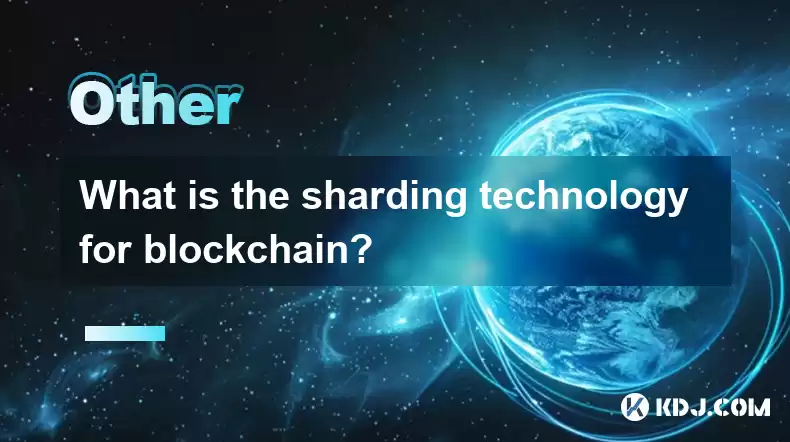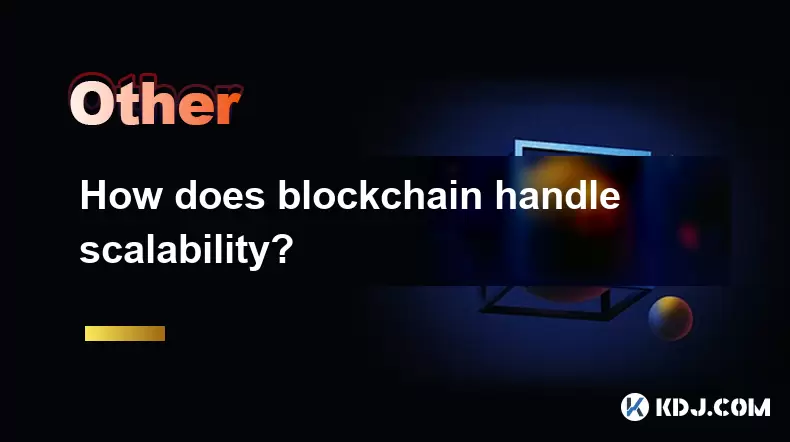-
 Bitcoin
Bitcoin $113600
-0.05% -
 Ethereum
Ethereum $3457
-1.05% -
 XRP
XRP $2.860
-4.17% -
 Tether USDt
Tether USDt $0.9998
-0.02% -
 BNB
BNB $747.3
-1.03% -
 Solana
Solana $161.0
-1.78% -
 USDC
USDC $0.9998
-0.03% -
 TRON
TRON $0.3259
-0.19% -
 Dogecoin
Dogecoin $0.1959
-1.69% -
 Cardano
Cardano $0.7227
0.85% -
 Hyperliquid
Hyperliquid $38.34
-0.83% -
 Sui
Sui $3.435
-0.88% -
 Stellar
Stellar $0.3796
-1.29% -
 Chainlink
Chainlink $16.02
0.16% -
 Bitcoin Cash
Bitcoin Cash $540.5
0.48% -
 Hedera
Hedera $0.2406
1.01% -
 Ethena USDe
Ethena USDe $1.001
0.03% -
 Avalanche
Avalanche $21.19
-1.37% -
 Toncoin
Toncoin $3.625
0.71% -
 UNUS SED LEO
UNUS SED LEO $8.962
0.03% -
 Litecoin
Litecoin $108.1
0.88% -
 Shiba Inu
Shiba Inu $0.00001207
-0.48% -
 Polkadot
Polkadot $3.576
0.66% -
 Uniswap
Uniswap $9.049
0.64% -
 Monero
Monero $298.9
0.81% -
 Dai
Dai $0.0000
0.00% -
 Bitget Token
Bitget Token $4.285
-0.11% -
 Pepe
Pepe $0.00001034
-1.16% -
 Cronos
Cronos $0.1302
-1.26% -
 Aave
Aave $257.5
1.46%
What is the sharding technology for blockchain?
Sharding enhances blockchain scalability by dividing the network into shards, allowing parallel transaction processing and increasing throughput, though it poses security and complexity challenges.
Apr 14, 2025 at 04:07 pm

Sharding technology for blockchain represents a significant advancement in the field of distributed ledger technology, aiming to enhance the scalability and efficiency of blockchain networks. Sharding essentially involves dividing the blockchain's database into smaller, more manageable pieces called shards. Each shard contains its own subset of data and transactions, allowing for parallel processing and increased throughput. This approach addresses one of the primary limitations of traditional blockchain systems, which often struggle with scalability due to the need for every node to process and store all transactions.
How Sharding Works in Blockchain
The concept of sharding in blockchain operates by partitioning the network into smaller segments, each responsible for a specific portion of the overall data. Each shard functions as a mini-blockchain, maintaining its own set of transactions and consensus mechanism. This division allows multiple transactions to be processed simultaneously across different shards, significantly increasing the network's capacity to handle transactions.
In a sharded blockchain, nodes are assigned to specific shards, where they validate and process transactions within that shard. Cross-shard communication is facilitated through protocols that allow shards to interact and share data when necessary, ensuring the integrity and consistency of the entire network. This modular approach not only boosts transaction speed but also reduces the storage and computational requirements for individual nodes.
Benefits of Sharding in Blockchain
Implementing sharding in blockchain networks offers several key advantages. Scalability is perhaps the most significant benefit, as sharding allows the network to process a higher volume of transactions per second. This is crucial for blockchain platforms aiming to support large-scale applications and compete with traditional payment systems.
Another advantage is improved efficiency. By distributing the workload across multiple shards, the network can achieve faster transaction processing times and lower latency. This is particularly important for applications requiring real-time transaction processing, such as financial services and gaming.
Additionally, sharding can lead to reduced costs for participants in the network. Since nodes only need to store and process data for their assigned shard, the hardware requirements and operational costs are significantly lower compared to full nodes in non-sharded blockchains.
Challenges and Considerations of Sharding
Despite its potential, sharding also presents several challenges that must be addressed. Security is a primary concern, as dividing the network into shards could potentially create vulnerabilities. Ensuring that each shard remains secure and that cross-shard transactions are protected against attacks is crucial for maintaining the integrity of the entire blockchain.
Another challenge is complexity. Implementing and managing a sharded blockchain requires sophisticated protocols for shard allocation, cross-shard communication, and consensus mechanisms. This complexity can make it more difficult to develop and maintain the network, potentially leading to higher development costs and longer implementation times.
Data consistency is also a critical consideration. Ensuring that all shards maintain a consistent view of the network's state is essential for preventing double-spending and other forms of fraud. This requires robust mechanisms for data synchronization and validation across shards.
Examples of Sharding in Blockchain Projects
Several blockchain projects have explored or implemented sharding to enhance their scalability and performance. Ethereum 2.0 is one of the most prominent examples, with its transition to a sharded architecture aimed at increasing the network's transaction capacity and reducing gas fees. Ethereum's sharding approach involves creating multiple parallel chains (shards) that can process transactions independently, with a beacon chain coordinating the overall network.
Another example is Zilliqa, which was one of the first blockchain platforms to implement sharding at the protocol level. Zilliqa's sharding mechanism allows the network to scale linearly with the number of nodes, enabling it to process thousands of transactions per second. This makes Zilliqa particularly suitable for applications requiring high throughput, such as decentralized finance (DeFi) and gaming.
Harmony is another blockchain project that leverages sharding to improve scalability. Harmony's sharding solution, known as "Effective Proof of Stake" (EPoS), combines sharding with a staking mechanism to enhance network security and efficiency. By dividing the network into multiple shards, Harmony aims to achieve high transaction speeds while maintaining decentralization and security.
Implementing Sharding in a Blockchain Network
Implementing sharding in a blockchain network involves several key steps and considerations. Here is a detailed guide on how to approach the implementation of sharding:
Define the Sharding Strategy: Determine how the blockchain will be divided into shards. This includes deciding on the number of shards, the criteria for shard allocation, and the mechanisms for cross-shard communication.
Develop Shard Allocation Protocols: Create algorithms for assigning nodes to specific shards. This should take into account factors such as node performance, network topology, and load balancing to ensure optimal distribution of resources.
Implement Cross-Shard Communication: Design protocols for enabling communication and data transfer between shards. This is crucial for maintaining the integrity of the network and ensuring that transactions can be processed across different shards.
Establish Consensus Mechanisms: Develop consensus algorithms that can operate within individual shards and across the entire network. This may involve adapting existing consensus mechanisms or creating new ones tailored to the sharded architecture.
Test and Validate the Sharding Implementation: Conduct thorough testing to ensure that the sharded blockchain functions as intended. This includes testing for scalability, security, and data consistency across shards.
Deploy and Monitor the Sharded Network: Once the sharding implementation is validated, deploy the network and continuously monitor its performance. This involves tracking transaction throughput, shard performance, and overall network health to identify and address any issues that arise.
Frequently Asked Questions
Q: How does sharding affect the decentralization of a blockchain network?
A: Sharding can impact decentralization by potentially concentrating power in certain shards or nodes. However, well-designed sharding protocols can mitigate this risk by ensuring that shard allocation and consensus mechanisms remain decentralized and secure.
Q: Can sharding be implemented on existing blockchain networks?
A: Yes, sharding can be implemented on existing blockchain networks, but it often requires significant upgrades and changes to the underlying protocol. Projects like Ethereum 2.0 demonstrate that it is possible to transition from a non-sharded to a sharded architecture, albeit with considerable effort and time.
Q: What are the potential risks associated with sharding in blockchain?
A: The main risks include security vulnerabilities, increased complexity, and challenges in maintaining data consistency across shards. Proper design and implementation are crucial to mitigating these risks and ensuring the overall integrity of the network.
Q: How does sharding compare to other scalability solutions like layer-2 scaling?
A: Sharding and layer-2 scaling are both aimed at improving blockchain scalability, but they operate at different levels. Sharding focuses on dividing the main blockchain into smaller segments, while layer-2 solutions, such as sidechains and state channels, process transactions off the main chain and then settle them back on the main chain. Each approach has its own advantages and trade-offs, and they can be used in combination to achieve optimal scalability.
Disclaimer:info@kdj.com
The information provided is not trading advice. kdj.com does not assume any responsibility for any investments made based on the information provided in this article. Cryptocurrencies are highly volatile and it is highly recommended that you invest with caution after thorough research!
If you believe that the content used on this website infringes your copyright, please contact us immediately (info@kdj.com) and we will delete it promptly.
- SOLF Token vs. BONK: Predicting a $300 Solana in 2025?
- 2025-08-03 16:30:16
- Sei, Injective, and Bitcoin Dominance: Navigating the Crypto Landscape
- 2025-08-03 16:50:15
- UK Lifts Ban on Crypto ETNs: Bitcoin Set for Retail Boom?
- 2025-08-03 16:30:16
- Coin Master Free Spins: Maximize Your Game with Daily Links (August 2025)
- 2025-08-03 16:50:15
- Bitcoin Liquidity, Osmosis Zone, and Investor Interest: A Deep Dive
- 2025-08-03 15:16:44
- Web3, Sports, and Computing Power: A New Ballgame
- 2025-08-03 15:16:44
Related knowledge

What is the difference between on-chain and off-chain transactions?
Aug 02,2025 at 04:22pm
Understanding On-Chain TransactionsOn-chain transactions refer to digital asset transfers that are recorded directly on a blockchain ledger. These tra...

What is a node's role in a blockchain network?
Aug 03,2025 at 03:16pm
Understanding the Function of a Node in a Blockchain NetworkA node is a fundamental component of any blockchain network, acting as a participant that ...

What is the double-spending problem and how does blockchain prevent it?
Aug 02,2025 at 01:07pm
Understanding the Double-Spending ProblemThe double-spending problem is a fundamental challenge in digital currency systems where the same digital tok...

What is the difference between a blockchain and a database?
Aug 01,2025 at 09:36pm
Understanding the Core Structure of a BlockchainA blockchain is a decentralized digital ledger that records data in a series of immutable blocks linke...

How does blockchain handle scalability?
Aug 02,2025 at 02:58pm
Understanding Blockchain Scalability ChallengesBlockchain scalability refers to a network's ability to handle an increasing volume of transactions wit...

What is the role of cryptography in blockchain?
Aug 03,2025 at 03:42pm
Understanding the Foundation of Blockchain SecurityCryptography is the cornerstone of blockchain technology, providing the essential tools to ensure d...

What is the difference between on-chain and off-chain transactions?
Aug 02,2025 at 04:22pm
Understanding On-Chain TransactionsOn-chain transactions refer to digital asset transfers that are recorded directly on a blockchain ledger. These tra...

What is a node's role in a blockchain network?
Aug 03,2025 at 03:16pm
Understanding the Function of a Node in a Blockchain NetworkA node is a fundamental component of any blockchain network, acting as a participant that ...

What is the double-spending problem and how does blockchain prevent it?
Aug 02,2025 at 01:07pm
Understanding the Double-Spending ProblemThe double-spending problem is a fundamental challenge in digital currency systems where the same digital tok...

What is the difference between a blockchain and a database?
Aug 01,2025 at 09:36pm
Understanding the Core Structure of a BlockchainA blockchain is a decentralized digital ledger that records data in a series of immutable blocks linke...

How does blockchain handle scalability?
Aug 02,2025 at 02:58pm
Understanding Blockchain Scalability ChallengesBlockchain scalability refers to a network's ability to handle an increasing volume of transactions wit...

What is the role of cryptography in blockchain?
Aug 03,2025 at 03:42pm
Understanding the Foundation of Blockchain SecurityCryptography is the cornerstone of blockchain technology, providing the essential tools to ensure d...
See all articles

























































































